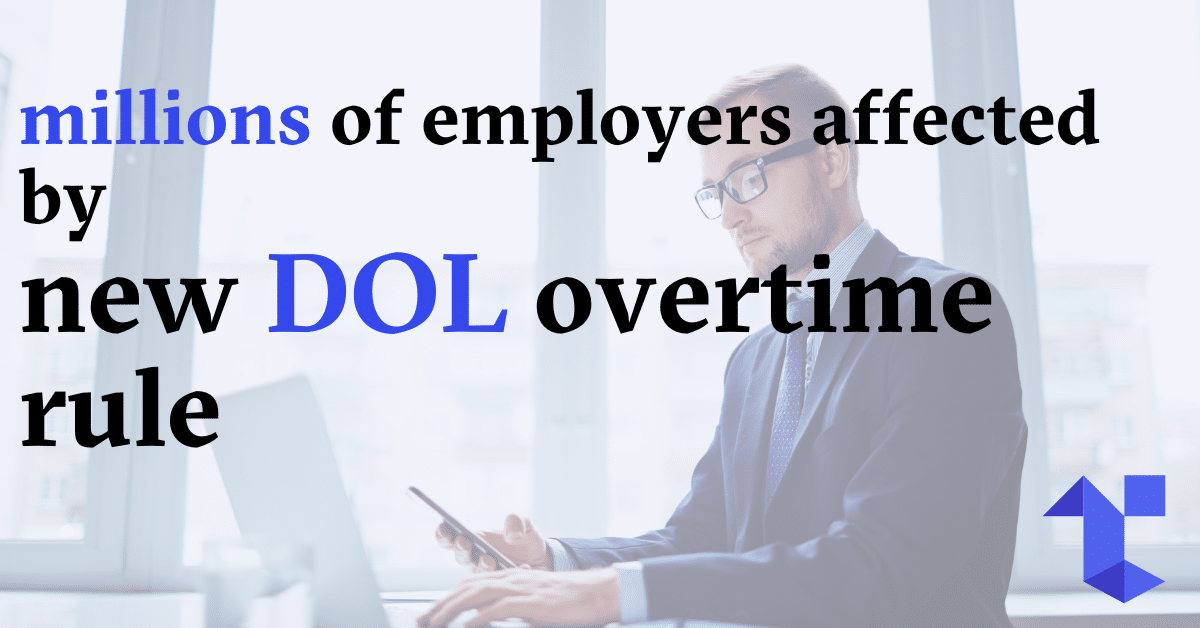Millions of Employers Affected by Updated DOL Overtime Rule
May 13, 2024
The U.S. Department of Labor (DOL) Wage and Hour Division has recently unveiled a significant update to its regulations, expanding the salary thresholds for overtime eligibility and bringing millions of salaried workers under its scope.
This revised rule sets new compensation standards for executive, administrative, professional (EAP), outside sales, and computer employees, marking the first major change since 2019. The impact of the updated DOL overtime rule is imminent, with the initial phase taking effect on July 1, necessitating swift action and adjustments, especially for small and mid-sized businesses.
Here’s a breakdown of the key changes:
Effective July 1, 2024:
– Standard Salary Level rises from $684 per week ($35,568 annually) to $844 per week ($43,888 annually)
– Highly Compensated Employee Threshold increases from $107,432 annually to $132,964 annually
Effective January 1, 2025:
– Standard Salary Level further rises to $1,128 per week ($58,656 annually)
– Highly Compensated Employee Threshold adjusts to $151,164 annually
Subsequent updates every three years from July 1, 2027, will ensure the salary thresholds stay current with economic realities and labor market changes.
To qualify for an exemption under the Federal Fair Labor Standards Act (FLSA), employees must pass the Salary Basis Test, Salary Level Test, and Duties Test. This ensures a fair and consistent approach to determining overtime pay eligibility.
The business landscape is set to undergo significant shifts, with an estimated 4 million more workers qualifying for overtime by January 2025. While the rule addresses disparities in compensation, especially for lower-paid salaried workers, it has raised concerns among business groups, citing potential financial burdens.
Adjusting to the updated DOL overtime rule will require businesses to manage increased labor costs, revise budgets, and make operational adjustments to ensure compliance. Strategies such as comprehensive payroll reviews, salary adjustments, policy updates, and technological integration can aid in navigating these changes effectively.
Preparing for the implications of the updated rule is crucial for businesses of all sizes, highlighting the importance of proactive strategies to maintain regulatory alignment while optimizing operational efficiency.
share this blog
STAY CONNECTED
Sign up for our newsletter for the latest Tesseon information.
Related Blogs
What our clients are saying about us
Disclaimer: The information provided on this blog page is for general informational purposes only and should not be considered as legal advice. It is advisable to seek professional legal counsel before taking any action based on the content of this page. We do not guarantee the accuracy or completeness of the information provided, and we will not be liable for any losses or damages arising from its use. Any reliance on the information provided is solely at your own risk. Consult a qualified attorney for personalized legal advice.

